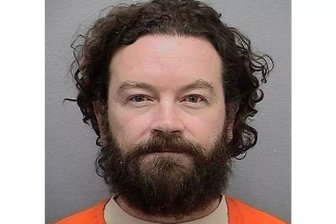Two-hundred-and-fifty Canadian troops and eight helicopters have just landed on the edge of the Sahara desert, joining the United Nations’ peacekeeping mission to Mali that’s been anything but peaceful.

At least 170 UN personnel have been killed since the mission’s inception in 2013, making Mali the UN’s deadliest operation. But the next time a peacekeeper or civilian in Mali is injured, the Canadian cavalry can fly to their rescue. And the chances of survival just improved as a result.
Until recently, if a soldier got hurt during a military mission, they were picked up by a helicopter and rushed to the nearest hospital. But in Mali, the Canadians are bringing the hospital to the patient.
WATCH: Exclusive: Inside Canada’s military mission in Mali

The Canadian Armed Forces have transformed three of its CH-147F Chinook helicopters into airborne emergency rooms. They’re deployed with an onboard medical team that includes a doctor, nurse and two medics. Even the two heavily-armed military escorts have advanced medical training.
“You will get ‘First World’ care in the back of the Chinook, as if you just walked into a Canadian emergency room,” said Col. Chris McKenna, the commander-in-charge of Canada’s first large-scale UN mission in nearly two decades.
“The level of health care that’s occurring in this helicopter is about the same as you’d get in Vancouver, Quebec City or Ottawa.”

Get daily National news
WATCH BELOW: Troops should be proud of Mali peacekeeping mission: commander

Global News was invited aboard one of the Chinook helicopters to witness a training exercise in Mali. The medical team flew to a remote location about 30-minutes from their military base in the city of Gao, to retrieve a Canadian soldier who was pretending to have serious head and leg injuries from an improvised explosive device.
The victim was carefully lifted onto a stretcher and carried aboard the helicopter, where the medical team immediately huddled around on their knees and began their procedures before the Chinook was even back in the air.
“Getting the patient to the hospital as quickly as possible is one of the most important things we can do,” said Lt.-Col. Leilani Doyle, the team’s doctor. “So what we’re doing is, instead of having an ambulance bring the patient to an emergency department, we’re bringing the emergency department to the patient.”
When not on military deployment, Doyle works as a physician at a hospital in Ottawa. She says the airborne health care requires a whole new level of co-ordination, resourcefulness and stamina.
“Back home in my emergency department, I’m just wearing a pair of scrubs. I’m not wearing all the personal protective equipment. All of that stuff on us is about 105 pounds. That’s not quite my body weight, but it’s getting close to my body weight. So that can get a little bit oppressive.”
“To watch the medicine that’s occurring in the back of this aircraft, in 40-degree heat, being pitched around the sky and still conducting that level of medicine is nothing short of incredible,” said Col. McKenna. “This is brand new to Canada and it’s going extremely well.”
While the so-called “Forward Medical Evacuation” represents a Canadian first, the system is based on a similar British model that was deployed during the war in Afghanistan, which produced a slightly better survival rate than the traditional system of deploying emergency air transport to a nearby hospital.
The Canadian mission is made possible due to Canada’s unusually large Chinook helicopters (approximately 30 metres in length), which provide enough space and supplies to treat up to seven patients simultaneously.
“The Chinook is really good at moving lots of stuff where you need it to go, without having to refuel a whole lot of times,” said Canadian pilot Pete Hanly.
The newly-arrived Canadians have yet to respond to a real medical emergency in Mali, but they’re now “on call” 24/7 until the Canadian mission ends on July 31, 2019, with a commitment to be airborne within 30 minutes of receiving a call.








Comments